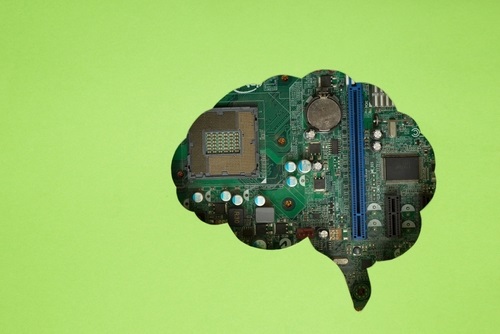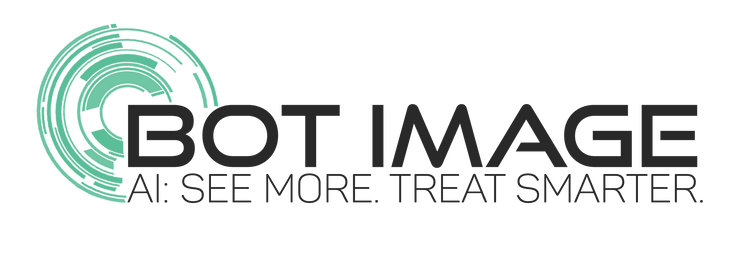
Blog
How Deep Learning in AI Is Reshaping Cancer Research Beyond Prostate Imaging

Expanding the Role of Deep Learning in Cancer Detection
Deep learning, a powerful subset of artificial intelligence (AI), has fundamentally transformed the way we approach medical imaging and diagnostics. While its application in prostate cancer imaging has garnered much attention, deep learning’s impact stretches far beyond this single use case. From identifying subtle patterns in medical imagery to integrating multi-modal data, its role in cancer research is expanding rapidly.
From Prostate MRIs to Broader Oncology Applications
AI-driven models trained on prostate MRI data have demonstrated extraordinary accuracy in detecting malignancies. But the same underlying principles—leveraging neural networks to identify distinguishing features—can be applied to various cancers. For instance, similar technologies are now being adapted to breast, lung, and other cancer types, enhancing detection rates and making diagnostics more reliable.
Why This Matters
The stakes in cancer research are high. Early detection often determines survivability, and this is where deep learning excels. Automated systems provide consistent precision, offering scalable tools that alleviate the workload for radiologists. By minimizing human error and increasing sensitivity, deep learning enables earlier diagnoses, which can lead to better patient outcomes.
A Critical Engine for Modern Cancer Research

Deep learning uses neural networks to process vast datasets, identifying patterns imperceptible to the human eye. For example, in oncology, deep learning systems can isolate minuscule anomalies in tissue that hint at the early stages of cancer. These capabilities are grounded in a technique called feature extraction, where unique markers—like abnormal cell morphology—are automatically identified.
Deep Learning in Histopathology and Multi-Cancer Screening
For deep learning models to achieve high accuracy, they require annotated datasets meticulously labeled by medical experts. Histopathology—the microscopic study of diseased tissue— has emerged as an area where such annotated data shines. Training AI on diverse, high-quality datasets ensures that models remain robust and adaptable to various cancers.
Deep learning now powers multi-cancer detection platforms capable of identifying various tumor types from a single test. For instance, in breast cancer diagnostics, AI models can flag abnormalities in mammograms with greater sensitivity. Similarly, for lung and colorectal cancers, deep learning aids in uncovering early-stage tumors that might otherwise go unnoticed during routine screenings.
Beyond Imaging: Integrating Deep Learning with Genomic and Clinical Data
Multi-Modal Data Fusion: MRI + Genomics + EMR
Deep learning is breaking ground in integrating diverse data types, such as imaging, genomics, and electronic medical records (EMR). By combining MRI findings with genetic mutations and patient history, AI systems create a more holistic view of a patient’s condition, paving the way for tailored treatment plans.
AI-Powered Biomarker Discovery and Therapy Prediction
Deep learning models are also advancing biomarker discovery—identifying molecular indicators linked to cancers. By studying genomic patterns amid clinical data, AI predicts how a patient might respond to therapies, enabling precision medicine that optimizes treatment efficacy while minimizing side effects.
Bias, Generalization, and Real-World Performance
The Risk of Overfitting in Heterogeneous Cancer Populations
One of the challenges deep learning faces is overfitting—when models perform well on training data but falter in real-world scenarios. This is particularly concerning in diverse cancer populations, where model biases can skew diagnostics.
To mitigate these issues, researchers are employing techniques like federated learning—where models are collaboratively trained across multiple institutions without sharing sensitive data—and domain adaptation, which ensures adaptability across diverse patient populations. These strategies enhance generalization and boost confidence in AI systems.
Clinical Translation: From Research to Bedside
Regulatory Hurdles and Model Validation Requirements
Despite its promise, deploying deep learning in clinical settings remains challenging due to strict regulatory requirements and the need for rigorous model validation. Ensuring that these systems are transparent, explainable, and reliable underpins their eventual approval and adoption.
The integration of AI tools into oncology is not seamless but holds significant promise. Automated imaging systems, for example, can prioritize high-risk cases, enabling oncologists to focus on patients requiring urgent care.
Example: Autonomous Detection of Liver Tumors in Routine CT
Consider the use of deep learning in liver cancer detection. AI models analyze routine CT scans, flagging abnormalities autonomously. This accelerates diagnosis, reduces clinical workload, and offers an example of how AI can be practically integrated into medical workflows.
The Future of Deep Learning in AI Cancer Tools
Self-Supervised Learning, and Explainable AI
Emerging trends such as foundation models—large neural networks pre-trained on massive datasets—offer unprecedented accuracy and versatility in cancer diagnostics. Self-supervised learning and explainable AI further enhance the capability of these tools by enabling machines to learn from unlabelled data while providing clear reasoning for predictions.
Toward a Unified AI Framework for Cancer Research
A unified AI framework combining imaging, genomic analysis, and patient history is the ultimate goal for cancer researchers. Such an ecosystem would streamline diagnostics, facilitate knowledge sharing, and accelerate research breakthroughs.
Unlocking the Next Generation of AI-Powered Oncology
Deep learning holds the key to revolutionizing clinical trials by identifying eligible participants based on genetic profiles and ensuring more personalized therapeutic approaches, resulting in better outcomes for patients.
As we harness the power of deep learning in cancer research, ethical considerations must remain a priority. Ensuring transparency in algorithms, addressing biases, and providing equitable access to AI-driven tools are paramount for fostering trust and improving global health equity.
Deep learning in AI is not just reshaping cancer detection; it’s rewriting the rules of oncology. The innovations discussed here highlight the enormous potential of this technology to deliver more precise, efficient, and equitable cancer care, unlocking the doors to a future where AI-powered oncology becomes a standard of care.


